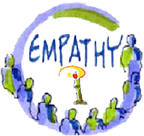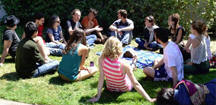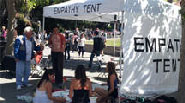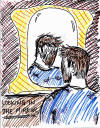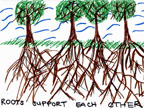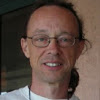|
|
|
Culture of Empathy Builder: Rachel Naomi Remen
Transcripts (Video Transcriptions: If you would like to take empathic action and create a transcription of this video, check the volunteers page. The transcriptions will make it easier for other viewers to quickly see the content of this video.)
Quotes
"Listening is the oldest and perhaps the most powerful tool of healing.
It is often through the quality of our listening and not the wisdom of
our words that we are able to effect the most profound changes in the
people around us. When we listen, we offer with our attention an
opportunity for wholeness. Our listening creates sanctuary for the
homeless parts within the other person. That which has been denied,
unloved, devalued by themselves and others. That which is hidden."
Rachel Naomi Remen, "The most basic and powerful way to connect to another person is to listen. Just listen. Perhaps the most important thing we ever give each other is our attention.... A loving silence often has far more power to heal and to connect than the most well-intentioned words." Rachel Naomi Remen "When we haven't the time to listen to
each other's stories we seek out experts to tell us how to live. The
less time we spend together at the kitchen table, the more how-to
books appear in the stores and on our bookshelves. But reading such
books is a very different thing than listening to someone' s lived
experience. Because we have stopped listening to each other we may
even have forgotten how to listen, stopped learning how to recognize
meaning and fill ourselves from the ordinary events of our lives. We
have become “Perhaps the most important thing we bring to another person is the silence in us, not the sort of silence that is filled with unspoken criticism or hard withdrawal. The sort of silence that is a place of refuge, of rest, of acceptance of someone as they are. We are all hungry for this other silence. It is hard to find. In its presence we can remember something beyond the moment, a strength on which to build a life. Silence is a place of great power and healing.” Rachel Naomi Remen “Helping, fixing, and serving represent three different ways of seeing life. When you help, you see life as weak. when you fix, you see life as broken. When you serve, you see life as whole. Fixing and helping may be the work of the ego, and service the work of the soul.” Rachel Naomi Remen
Just Listen an excerpt
Rachel Naomi
Remen
Rachel Naomi Remen
- Generous Listening
The Healing Art Of Generous Listening Lissa Rankin, April 4, 2012
"My mentor Dr. Rachel Naomi Remen, author of Kitchen Table
Wisdom, spends a lot of time talking about generous listening in the
programs she teaches such as these and in the Healer’s Art curriculum
she developed for medical schools, which I had the privilege of
participating in as a practicing doctor.
Techniques for Generous Listening - Bernie May
Last week I encouraged you to be more than an active listener. I
encouraged you to be a generous, respectful, and calm listener instead.
While the “active” listening techniques of eye contact and body language
are useful, they don’t go deep enough.
GENEROUS LISTENING attitudes and practices
"When we are using generous listening we create more S P A C E around
the issue than existed
|
||||||||||||
|
||||
